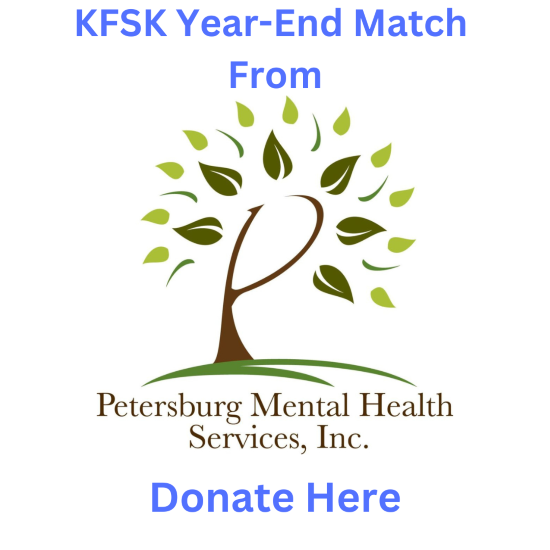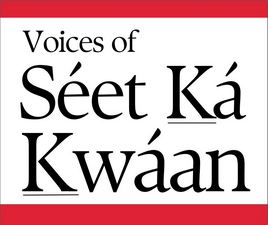
The state of Alaska has told hatchery operators in Southeast Alaska it is ending a program that provides funding for king and coho salmon production. That announcement leaves the future of the Crystal Lake Hatchery on southern Mitkof Island near Petersburg up in the air.
Crystal Lake is owned by the state, which contracts out its operations to the Ketchikan-based Southern Southeast Regional Aquaculture Association for just over 517-thousand dollars a year. King salmon produced there are released near Petersburg along with other sites in Anita Bay near Wrangell, Neets Bay near Ketchikan and Port St. Nicholas near Craig. On average, about 40 percent of all Alaska hatchery chinook caught in Southeast are from Crystal Lake.
“We’re proud of that,” said David Landis, general manager of the regional non-profit aquaculture association. “We’re happy that Crystal Lake Hatchery is a highly productive operation. We’re pleased that so many sport and commercial fishermen are able to benefit from that. We’d certainly like to see it continue.”
“It’s going to be difficult,” he continued. “I won’t mince any words there. There’s a funding shortfall and it’s going to be hard to fill those gaps because SSRAA has had several years of poor returns from our cost recovery fish and so we’re in a deficit situation to begin with and this certainly isn’t helping.”
He’s referring to notification from the state that it’s ending the Division of Sport Fish’s Southeast enhancement program. The division has used money from a surcharge on sport fishing licenses to pay for some of that program along with federal sport fishing money. The license surcharge was meant to pay off debt for construction of sport fish hatcheries in Anchorage and Fairbanks. With those bonds paid off, it ends this year.
Alaska Department of Fish and Game commissioner Doug Vincent-Lang writes in an email that he’s directed this program to be discontinued because of the loss of this funding and other budget pressure. Vincent-Lang writes that sport fish license revenue has declined by over five million dollars because of a steep drop in tourism with the pandemic restricting travel. Fish and Game is already cutting programs because of that and Vincent-Lang writes that his department would be forced to cut other existing programs in its budget to continue funding for Southeast hatcheries.
Governor Dunleavy introduced bills this year to continue the surcharge to pay for hatchery operations and maintenance. Those didn’t move out of the House or Senate before the end of this year’s COVID shortened session. Vincent-Lang writes that he hopes to have that funding bill considered again by the legislature. “If it passes it is our intent to use some of the proceeds to continue this project given its benefits,” Vincent-Lang writes.
He notes the state will work to ensure that fish already being reared will be released. At Crystal Lake that includes the offspring from last year’s fish, 1.4 million scheduled for release in May of 2021 and the offspring of this year’s fish, 1.8 million salmon to be released in 2022.
There are four full time hatchery employees at Crystal Lake. Two have been with SSRAA for two decades or more. The hatchery started as a state project in 1973, initially using king eggs from the Columbia River. It later switched to eggs taken from a tributary of the Stikine River near Wrangell. The state also looked at closing it 20 years ago, before SSRAA took over operations. Landis said SSRAA needs state funding to continue running Crystal Lake.
“It was unexpected to have to grapple with this particular issue,” he said. “We’ve got plenty of other things to go around and budget impacts especially with our deficit cost recovery situation but we’ll tackle this head on and hopefully come to a conclusion that will be positive.”
That contracted cost recovery fishing normally pays for annual operations but returns have been poor for three years. The regional non-profit had to borrow five million dollars from the state last year and expects to be forced to do that again in 2020, despite budget cutting and spending down reserves. SSRAA’s contract with the state for Crystal Lake runs through next June. SSRAA’s board meets October 30th and the facility’s future will be on the agenda.
Near Petersburg, SSRAA releases 600,000 juvenile kings and 100,000 coho at Blind Slough along with another 100,000 kings at City Creek each year. That’s meant annual returns of several thousand kings and cohos, with many of those caught in gillnet, troll and sport fisheries.
Douglas Island Pink and Chum also received this state funding for production of king salmon at DIPAC’s Macaulay Hatchery. Executive director Katie Harms writes in an email that her organization is still working through the details of what it means for DIPAC’s chinook program if the state funding is not continued.











